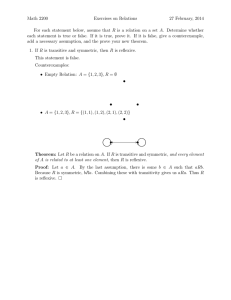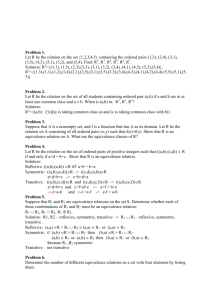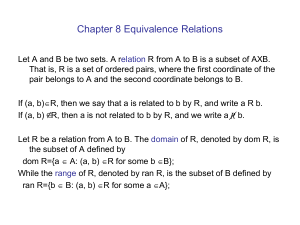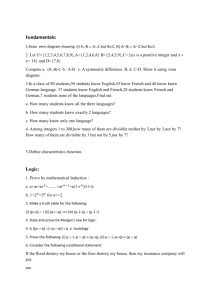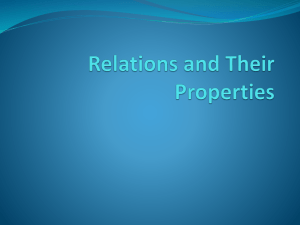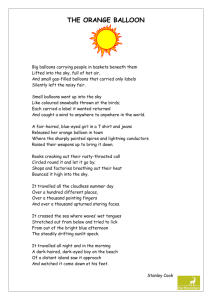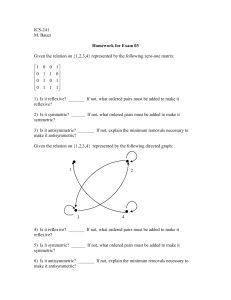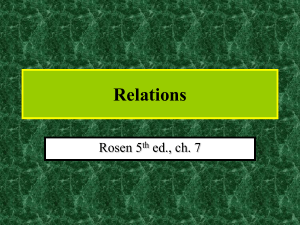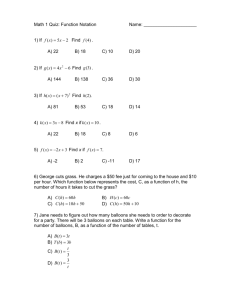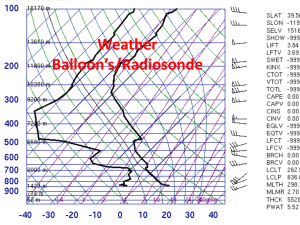COMP SCI 242 Discrete Mathematics II Spring 2004
advertisement
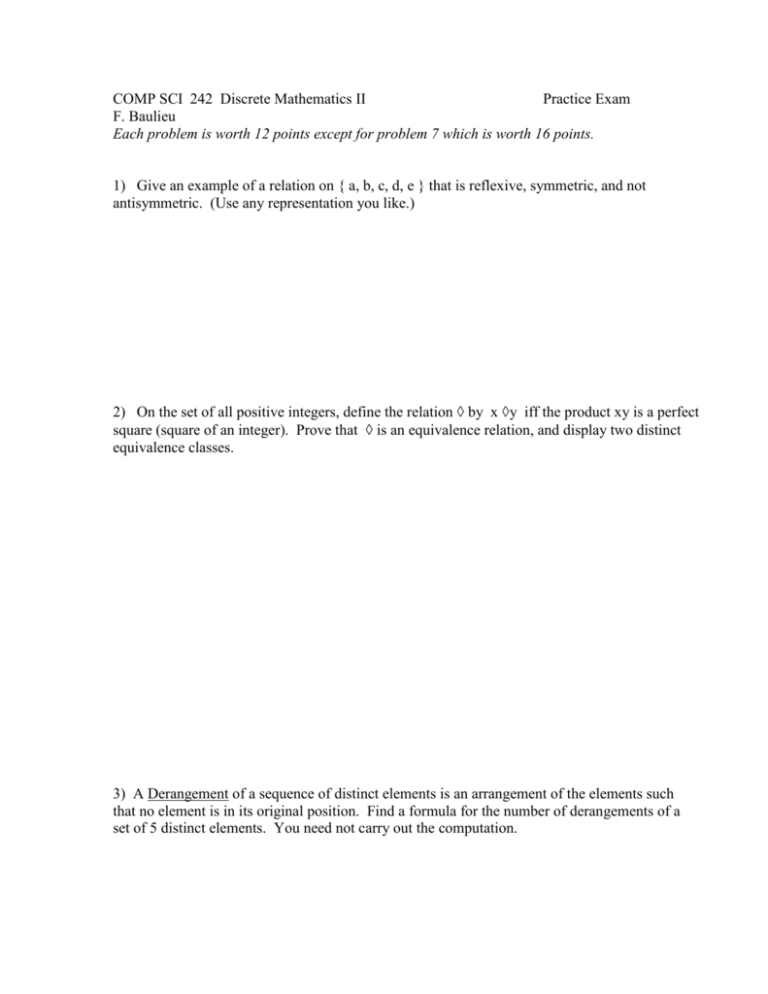
COMP SCI 242 Discrete Mathematics II
Practice Exam
F. Baulieu
Each problem is worth 12 points except for problem 7 which is worth 16 points.
1) Give an example of a relation on { a, b, c, d, e } that is reflexive, symmetric, and not
antisymmetric. (Use any representation you like.)
2) On the set of all positive integers, define the relation by x y iff the product xy is a perfect
square (square of an integer). Prove that is an equivalence relation, and display two distinct
equivalence classes.
3) A Derangement of a sequence of distinct elements is an arrangement of the elements such
that no element is in its original position. Find a formula for the number of derangements of a
set of 5 distinct elements. You need not carry out the computation.
4) How many subsets of the set { 2, 5, 6, 7, 8, 12, 21 } contain at least one prime number? (You
need not carry out the computation.)
5) Prove that in any group of n people, there must be two who have the same number of friends
in the group. (Assume friendship is a symmetric relationship.) No one is considered to be their
own friend.
6) Let X be a set of n distinct objects. Find a formula for the number of reflexive symmetric
binary relations are there on X. (Hint: What will the matrix look like?)
7) Shown below is the relation matrix for a binary relation on the set {1, 2, 3, 4, 5, 6, 7 }
a) Display the digraph associated with this relation.
b) Is the relation reflexive? Support your answer.
c) Is the relation symmetric? Support your answer.
d) is the relation transitive? Support your answer.
e) Is the relation antisymmetric? Support your answer.
f) Is the relation an equivalence relation? Support your answer.
g) Is the relation a partial order? Support your answer.
1
2
3
4
5
6
7
1
1
0
0
0
0
0
1
2
0
0
0
1
0
1
0
3
0
0
1
0
1
0
0
4
0
1
0
0
0
1
0
5
0
0
1
0
5
0
0
6
0
1
0
1
0
1
1
7
1
0
0
0
0
1
1
8) A balloon vendor sells bouquets of balloons. She has balloons in 5 different colors. How
many color combinations are possible for a bouquet of 10 balloons if it must contain at least one
blue balloon? (You need not carry out the computation.)

